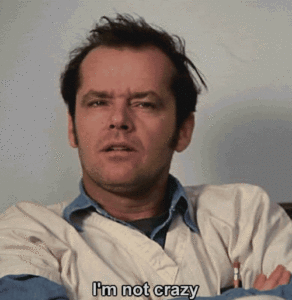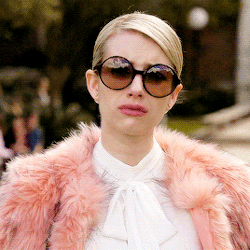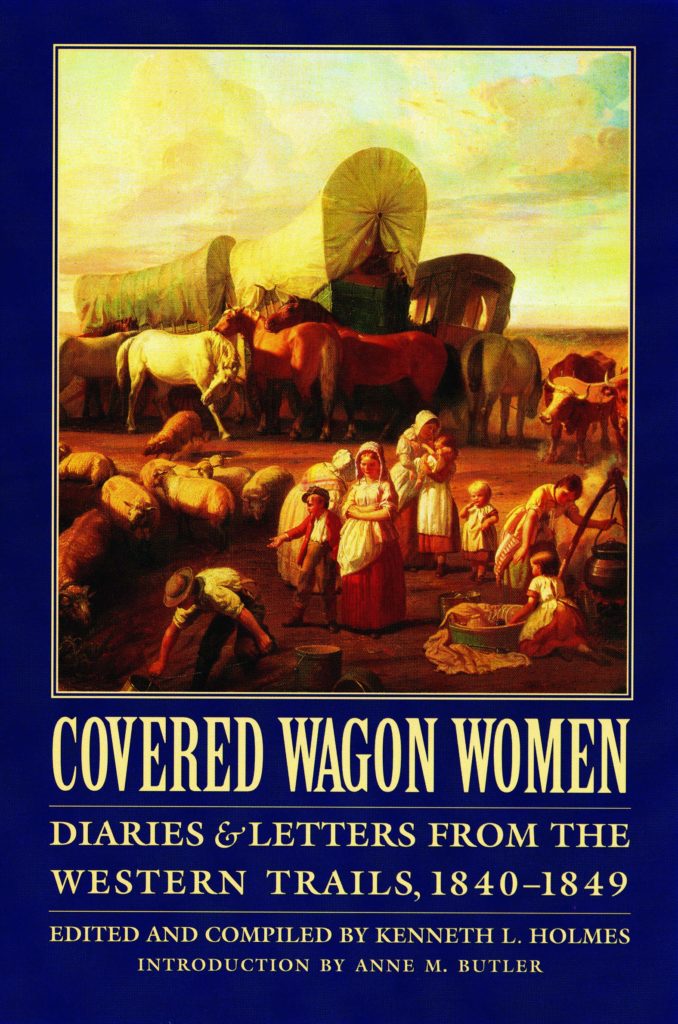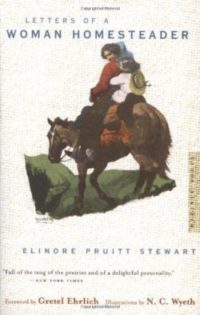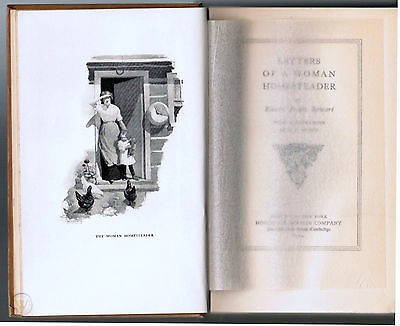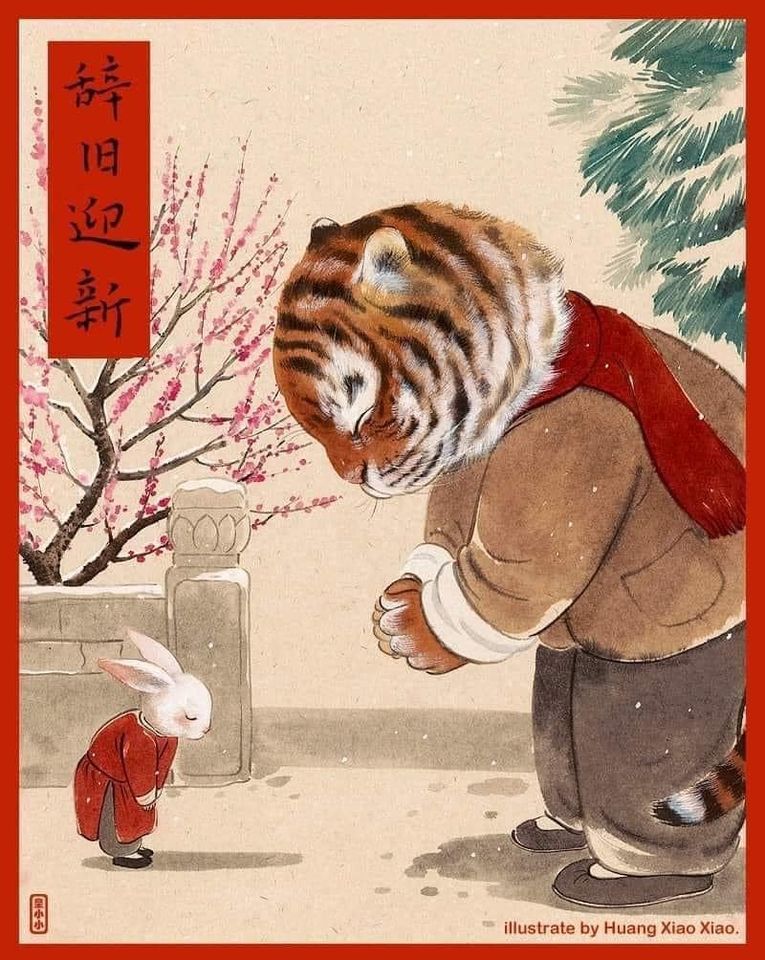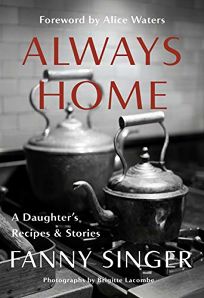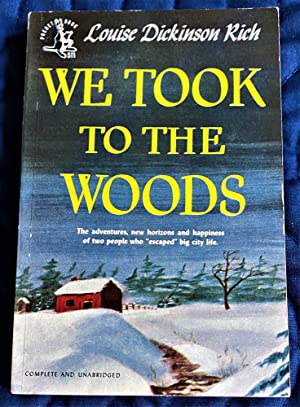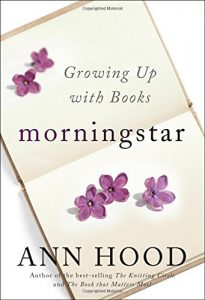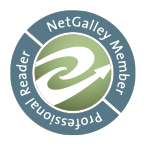A Kick in Attitude
This past weekend, I pulled my back wrong and then my knee started acting up and I was hobbling around like I was ancient (which I’m not – yet). Then, given the horrific shootings, Chinese New Year was a somber affair among our neighbor friends. No parties or sharing of cheerful foodstuffs.
In short, I was feeling sorry for myself, a state of mind which I abhor.
Whenever I catch myself having a pity party — I pull out either of these two books and open to any page to remind myself what a plum and cushy life I lead.
Covered Wagon Women
Edited and Compiled by Kenneth L. Holmes
Covered Wagon Women was recommended by friend (looking at you, with love, GH) many years ago and it still has a treasured place on my shelves — just for times like this when I need to kick my ass attitude out of an inappropriate bad mood.
These are the collected diaries and letters of fourteen pioneer women traveling west in covered wagons during the 1840’s.
Mr. Holmes, a historian has left everything in its original source — unedited diary entries, letters and other correspondence. This is how the women actually wrote then, complete with original dialect, spelling, and punctuation — complete with mistakes. The women speak in their own voices, without any modern influence. It will take you a few pages (or chapters) to get into the rhythm of their voices — and figure out the spelling — but after a bit, you get the hang of it. Whenever I re-open this book and read an entry or two, I always feel like I am actually there in the wagon listening to their personal accounts.
Every entry gives a slightly different viewpoint on the hardship and horror these remarkable women experienced and endured to discover new lives out west. Some are mundane, others soul-crushing, and some spirit-lifting. We read of Tamsen Donner and young Virginia Reed, members of the ill-fated Donner party; Patty Sessions, the Mormon midwife who delivered five babies on the trail between Omaha and Salt Lake City; Rachel Fisher, who buried both her husband and her little girl before reaching Oregon.
Because this collection is told from a woman’s point of view, domesticity is shown to be a means of survival, much as a gun. They cooked meals every day under dire circumstances. They sewed, weaved, knitted and mended clothes and bedding. They washed up when they had enough water, but went dirty for weeks if required. They walked miles over some of the roughest terrain America possesses – rocks, sand, dust, mud – over flat rutted trails and up and down mountain paths. They fed and milked cows, helped keep oxen and horses alive, birthed babies and buried them.
There is much unsaid in these letters. They rarely speak of their personal suffering, but instead relate what happened simply and factually. Despite the brevity, when a letter mentions how long they went without water and how many animals and people died because of it, it is easy to read between the lines.
There are 11 books in this series, and maybe someday I will tackle more, but for now this first in the series is enough to remind me of the luxuries in my life – water at the turn of a faucet, a warm bed, soap – well, you know what I mean.
Get yourself out of your bad mood and check out Covered Wagon Women – available at your local library.
Letters of a Woman Homesteader
by Elinore Pruitt Stewart
In the same vein, but not nearly as grim, is Letters of a Woman Homesteader, which I have read cover to cover.
As a young widow Elinore Pruitt left Denver in 1909, with her young daughter, and set out for Wyoming, where she hoped to buy a ranch. Determined to prove that a lone woman could survive the hardships of homesteading, she initially worked as a housekeeper for a neighbor — a kind but taciturn Scottish bachelor, whom she eventually married.
In twenty-six letters written to a friend back in Denver, she joyfully records her days, not considering the life she has chosen on the frontier as hardship. Instead, she revels in the natural beauty of her surroundings and in her friendships with like-minded women in her frontier community.
Elinore and her friends, face the unexpected with courage and good humor. They live unselfishly, and are overly generous with kindness and deeds for those less fortunate. She tells of unified and skillful hospitality; impromptu weddings, spur of the moment feasts for strangers, and designing and sewing wardrobes for a needy family in just a few days time.
Spring and summers were hard, she concedes, and were taken up with branding, farming, doctoring cattle, and other chores. But with the arrival of fall, Pruitt found time to take her young daughter on camping trips and serve her neighbors as midwife, doctor, teacher, Santa Claus, and friend.
My well-worn copy contains the original illustrations by N. C. Wyeth. However, I found out the digital version of Letters of A Woman Homesteader is free — as this classic is in the public domain.
Described by the Wall Street Journal as “warmly delightful, vigorously affirmative,” this classic of American frontier life will charm today’s audience as much as it fascinated readers when it was first published in 1914.
The reading is indeed enjoyable and flows beautifully — it reads like a novel.
So there you go. In a bad mood? Need a good kick in the attitude? Instead of self help books or those cheesy gratitude journals, read about women who met extreme hardship and tough lives with bravery, strength, humor, kindness, and grace.
Now I have to go unload my wonderfully modern and convenient dishwasher – no tin pans rinsed in the creek for me.
I’m a very lucky gal – pity party is over.
With respect to the new Lunar New Year.
Always Home by Fanny Singer
A fellow foodie friend loaned me his signed copy of this book — calling it the perfect escapist read during the pandemic. Given the title, I had to laugh and agree.
I just finished Always Home, having dipped in and out of it for many months now.
But first a little background; Fanny Singer is the daughter of Alice Waters, one of our most beloved chefs and founder of the famous Chez Panisse restaurant.
Alice was an early advocate of sourcing only the best local ingredients and is also known for her edible schoolyard program in Berkeley. And, although I am now weary of Alice and her endless publicity, I was fascinated to read this lovely memoir by her daughter, Fanny, who grew up in the glow of this revered chef.
Husband and I have been fortunate to have dined at Chez Panisse (and the more casual upstairs Fanny Cafe) and Always Home brings Fanny, her family, and behind the scenes of the restaurant to life. Turns out, Fanny was partially raised in the restaurant kitchens, surrounded by attentive chefs and prep cooks. Hers was a life full of love and really, really yummy food. Even Fanny’s lunchboxes were meticulously curated by her culinary-obsessed mother:
My lunches were not broken into courses as much as they were divided into multiple parts. There was a largish container that held a salad, a medium container for garlic bread (levain toast rubbed with olive oil and garlic), another for a season fruit compote or macédoine, a very small jar with a vinaigrette because, of course, we were both aware of the perils of prematurely dressing the salad.
Of course, I was intrigued by the recipes throughout the book and made notes to copy such delights as authentic French Citron pressé, various simple salad dressings, real Aioli, and Franny’s roast chicken which requires such high oven heat, that it comes with a warning to disable your smoke detectors.
I found Alice Waters’s quirks weirdly fascinating–her tendency to drink from bowls rather than mugs and to “jettison her silverware and delve in with her fingers,” expressing “a primal impulse to be closer to the thing she was eating, to be more sensuously acquainted.” Alice is dogmatic about sourcing only organic, locally-sourced ingredients and it’s revealed as what it actually is – an life-long obsession — which is termed “Chez shopping”.
But mostly I was drawn into the beauty of this life — how even the simplest meal could be made special, the focus on the fresh ingredients, and even the endless curation of flower arrangements everywhere:
Flowers were for my mom not just a confection to be enjoyed at the restaurant, but a part of what made any room complete. Billowing leafy branches and a few stems of some decidedly un-showy flower seem to be permanently installed in a large green urn in the far corner of the kitchen.
Fanny’s childhood trips to France are some of the best parts of Always Home — how their French friends sought beat up Brocantes (antiques) to restore, the overgrown but abundant garden, and evening meals outside under heavily scented rose bushes.
At the same time, this was (and is) a privileged life of wealth — surrounded by renowned cooks, celebrated artists, the access to abundant food resources, and the Berkeley bohemian culture. There is no shortage of name dropping, and a wee bit of trying-too-hard-overwriting. But, in the end, Fanny’s love and admiration for her mother emanates from every page:
There is a quality of ‘homecoming’ that transcend location, and not just because I reach deep into my repertoire of my mother’s recipes to animate her table through mine, but also she is somehow present even when she is not.
Always Home is charming, funny, full of love and really, really (did I say really?) good food. And, hey, any book that helps make a home special for those we love, and perhaps even ourselves, is beyond value these days.
But let’s turn to one of my favorite foodie writers Ruth Reichl — here is her review of Always Home
You will probably pick up this book because you’re curious about how it feels to grow up with Alice Waters as your mother. But you will inevitably be captivated by Fanny Singer’s sensuous voice and sensible soul. The writing’s lovely, but more than that, Fanny has struck a kind of brutal honesty that is extremely rare and completely beautiful. Her writing makes you want to taste every flavor she describes, and soon you’ll be dashing into the kitchen to make watercress soup, wild fennel cakes, and breakfast pudding. But the really important thing is that I’m pretty sure everyone who reads it will come away with the same feeling that I have: Why don’t I live my life like this? How can I do better? I love this book.”
A side note, this is quite an expensive book, however it feels nicely substantial in one’s hands, it’s printed on heavy paper, and contains many beautifully produced photographs. And the best — it’s bound so it will stay open for the recipes. Such a pleasure to have a book printed with that sort of craft and thought.
Reading in Place My Favorite Books: Part 1
This last week (and whew, what a week, heh?) friends and readers have asked for book recommendations. That’s a tricky endeavor as everyone has unique reading tastes. As a substitute, I thought I’d tackle something I’ve been contemplating a long time — a list of my own favorite books. Before Book Barmy, I kept notebooks of all the books I’d read with my thoughts – so pulling together my Favorite Books list presented quite a job. But seeing as I’m not going anywhere – I’ll give it a shot. Perhaps you’ll want to pick and choose from these Book Barmy favorites for books to read while sheltering in place.
I know the libraries are closed in many areas, so if you want to buy any of these books — Please contact your local independent bookstore. They will happily take your order, personally ship your book(s), and will surely appreciate your distancing business right now. Find your local bookseller HERE
So, in no particular order and surely missing some – here we go. I will use a combination of my own notes and the book blurbs to give you the briefest but most complete synopsis of each book. Many of these books have a permanent place on my shelves, while others are long gone – happily given away to others who will enjoy them.
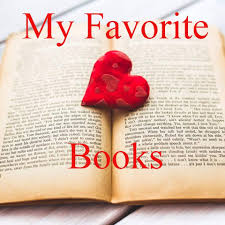
My Favorite Books – Part 1
Stones for Ibara, by Harriet Doerr
An excellent novel of cultural understanding and misunderstanding — stereotypes, adapting, and the power of grace. Richard and Sara Everton who have come to the small Mexican village of Ibarra to reopen a copper mine abandoned by Richard’s grandfather fifty years before. They have mortgaged, sold, borrowed, left friends and country, to settle in this remote spot; their plan is to live out their lives here, connected to the place and to each other. The two Americans, the only foreigners in Ibarra, live among people who both respect and misunderstand them. And gradually the villagers–at first enigmas to the Evertons–come to teach them much about life and fate.
Memoirs of a Geisha by Arthur Golden
This novel will absolutely transport you into the world of a Geisha. Nitta Sayuri tells the story of her life as a geisha. It begins in a poor fishing village in 1929, when, as a nine-year-old girl with unusual blue-gray eyes, she is taken from her home and sold into slavery to a renowned geisha house. We witness her transformation as she learns the rigorous arts of the geisha: dance and music; wearing a kimono; elaborate makeup and hair; pouring sake to reveal just a touch of inner wrist; competing with other geisha for men’s solicitude and the money that goes with it. We enter a world where appearances are paramount; where a girl’s virginity is auctioned to the highest bidder; where women are trained to beguile the most powerful men; and where love is scorned as illusion. It is a unique and absorbing novel —romantic, erotic, suspenseful—and, for me, completely unforgettable.
The Amazing Adventures of Kavalier & Clay by Michael Chabon
I never thought I would be interested in, let alone be besotted, by a book about two book artists in golden age of comic books — but this Pulitzer Prize winning novel just blew me away. A young escape artist and budding magician named Joe Kavalier arrives on the doorstep of his cousin, Sammy Clay. While the long shadow of Hitler falls across Europe, America is happily in thrall to the Golden Age of comic books, and Sammy is looking for a way to cash in on the craze. He finds the ideal partner in the aloof, artistically gifted Joe, and together they embark on an adventure that takes them deep into the heart of Manhattan, and the heart of old-fashioned American ambition. From the shared fears, dreams, and desires of two teenage boys, they spin comic book tales of the heroic, fascist-fighting Escapist and the beautiful, mysterious Luna Moth, the otherworldly mistress of the night. The writing is magic as they bring their comic book characters and stories to life — while also carving out their own vivid lives and amazing adventures of their own.
The Griffin and Sabine Series by Nick Bantock
These were hugely popular back in the 90’s and according to many critics, somewhat of a gimmick – but I adored this series of books and have hung onto them all these years later. Every so often, I’ll take them down and fall into what is the equivalent of adult pop-up books.
Griffin and Sabine are located on opposite ends of the earth — Griffin is a lonely artist in damp England, while Sabine is a native living on the sun-drenched island of Sicmon in the South Pacific. We meet them as they have just become pen pals and it is their correspondence back and forth which comprises the Griffin and Sabine books. Soul mates, they decide to meet, face to face. Their quest (and failures) to meet one another forms the backbone of these books. There are letters to open, postcards to read, handwriting to decipher, maps to study, all, for this reader — pure delight. You’re given the sensation of having stumbled upon a romantic mystery to which only you are privy – a private secret kept locked between the covers. The story is nothing much, but the discovery of it is exquisite. The art of these books is in their meticulous printing. There are actual envelopes glued into the text which you open to unfold an actual letter, postcards and beautiful illustrations– a true work of love on the part of Mr. Bantock and the publisher.
We Took to The Woods by Louise Dickinson Rich
Back as a teen in New Hampshire, we’d experience snow day school closures (much like today’s shelter in place). During one snow day, attracted by the jacket cover inviting me down a snowy path to a snug home in the pines, I picked up my mother’s copy of We Took to The Woods and happily wiled away the afternoon. Louise Dickinson Rich took to the woods of Maine with her husband. There they found their livelihood and raised a family in the remote backcountry of the Rangeley area of Maine. Ms. Rich made time after morning chores to write about their lives. This is not a biography, not even a memoir. Instead, in a very informal, conversational style, Rich answers key questions people have asked her about her life as a writer, a wife, and a mother deep in the north woods of Maine. One question per chapter: “Aren’t You Afraid? Don’t You Get Bored? How Do You Make A Living?” Her answers are candid, funny, detailed, and enlightening. We Took to the Woods is an adventure story, written with humor, but it also portrays a cherished dream realized in a full life. First published in 1942. I have since found my own copy in a used bookstore — but sadly, without my beloved original dust jacket.
The Magicians Assistant by Anne Patchett
Anne Patchett is one of my go-to authors but this has to be my favorite of her novels so far. When Parsifal, a handsome and charming magician, dies suddenly, his widow Sabine–who was also his faithful assistant for twenty years–learns that the family he claimed to have lost in a tragic accident is very much alive and well. She is left to unravel his secrets, and the adventure she embarks upon, from sunny Los Angeles to the bitter windswept plains of Nebraska, will work its own magic on her. A deliciously original story about love — in all its many forms.
My Life In France by Julia Child
This is THE book to read if you want to know about Julia Child. It’s fun, insightful, and delightfully ‘Julia’. Previously on Book Barmy HERE
84 Charing Cross Road by Helene Hanff
My list would be definitely incomplete without this treasure. I have purchased and given away many copies of this book — one of my top top favorites. Read more HERE
Okay, that’s enough for today. Don’t worry there’s plenty more — see Part 1 above.
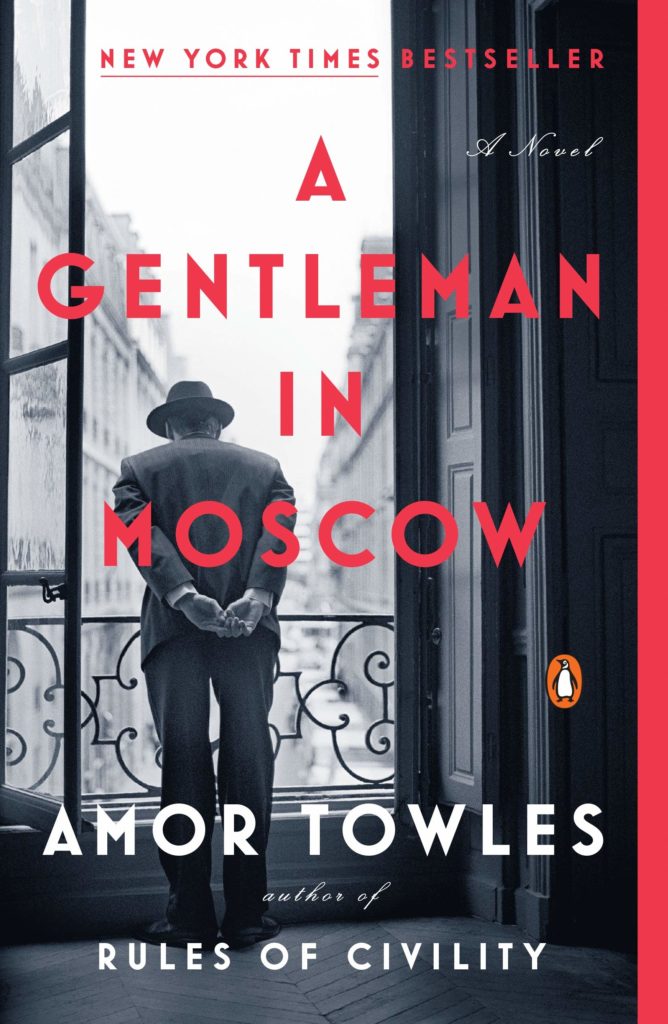
I have to get back to a new book which I just started last night. It’s auditioning for this same list…
The Bucolic Plague by Josh Kilmer-Purcell
I can imagine you read that title and thought– What? How inappropriate. Book Barmy toting a book about a plague? But please read that title carefully folks — it’s a ‘bucolic’ plague — not the scary plague.
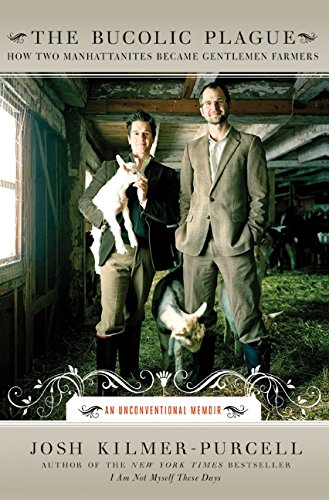
The very timely-titled The Bucolic Plague is a wonderfully funny memoir about what happens when two New Yorker’s (one an ex-drag queen) do the unthinkable: start over, have a herd of kids, and get a little dirty. (That bit is from the books’ inside cover blurb — but it was too good not to copy).
One autumn Sunday, Josh Kilmer-Purcell and his partner, Dr. Brent Ridge, were headed back to Manhattan after apple picking in upstate New York. They stumbled into the little town of Sharon Springs — where they found their dream home — the historic 19th-century Beekman mansion — complete with a 60-acre farm. And so they bought it — using most of their savings.
And now a brief message from Book Barmy: Ahh, you say, I’ve read this type of book before, city folks move to the country and find their bliss. Trust me, this is NOT that book.
From the Author’s Caution:
This book is not about living your dream. It will not inspire you. You will not be emboldened to attempt anything more than making a fresh pot of coffee. The author reminds you that there are plenty of other memoirs out there written by courageous souls who have broken with their past … and have successfully achieved goals… The author notes that those memoirs are generally full of more s#@* than a barn at the end of a long winter.
Back to our regularly scheduled post: Now our intrepid couple had to figure out how to balance their busy careers during the week (Josh, an advertising executive and Brent a VP for Martha Stewart Living). They envisioned leisurely weekends away from the city as gentlemen farmers. Then Josh hires a live-in caretaker who just happens to bring along his herd of goats. And, well, if they have goats, they might as well have chickens. How about a cow for cheese? And they must have a garden. And then a bigger garden. When they gave friends and family handmade goat milk soap at Christmas – they began taking orders for the soap and soon Beekman 1802 was born and grew into an artisan mercantile company.
Later, after the publication of this book, they launched their own reality show called The Fabulous Beekman Boys (google it) and even had a role on The Amazing Race (they won!).
The Bucolic Plague is the unvarnished story of their journey — as they make their way from hectic Manhattan lives to even more hectic, but bucolic, lives on a farm. They face harsh realities, failures, doubts, and stinky, filthy chores. Just to give you a taste of their new normal — they encountered an invasion of flies (as icky as it sounds), a tricky birth of triplet goats (not for the fainting type), and the perils of food preserving (at least no one got sick).
There are celebrity encounters — mostly with Martha Stewart, who Mr. Kilmer-Purcell regards with a mix of wonder, snark and disbelief. His account of transporting a flock of baby goats into NYC for an appearance on Martha’s television show is downright hilarious.
The couple’s relationship struggles under the financial strains and a schedule that leaves little room for sleep, let alone, togetherness. Throughout The Bucolic Plague, I was rooting for this couple to stay together and make a success of their farm.
Book Barmy pro-tip, do not read this book in bed, as you will irritate your sleeping partner. I was snorting and cackling all the way through the many adventures of Josh and Brent. I had trouble putting it down and tried, with little success, to ration it out, so it wouldn’t end too soon.
Mr. Kilmer-Purcell has written a laugh-out-loud funny, yet moving, account of dreams lost and then realized. And no such journey can be complete without compromise, set-backs, and great heart.
So — you’re hunkered down, staying at home and you want something light- hearted and fun to read, then The Bucolic Plague is highly recommended.
My only complaint is that book didn’t have any photos of their beautiful house and farm. So here you go ~~
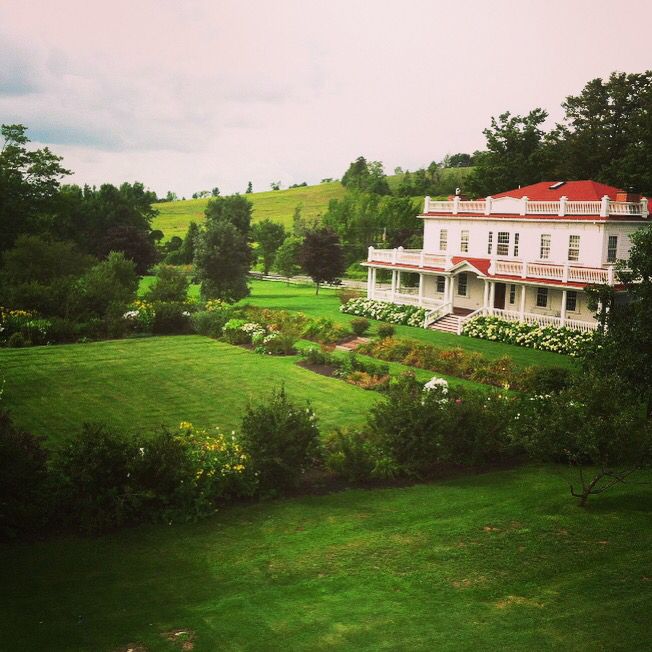
Stay home, read good books — stay well, read good books.
Dear Fahrenheit 451, by Annie Spence
I needed a break from reading three dark thrillers in a row (just finishing my last one – really good, but more on that later.)
So I slipped over into the warm comfort of this book.
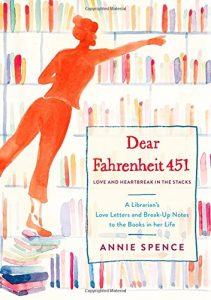 Dear Fahrenheit 451 by Annie Spence
Dear Fahrenheit 451 by Annie Spence
Love and Heartbreak in the Stacks
A Librarian’s Love Letters and the Breakup Notes to the Books in Her Life
Ms. Spence is a young librarian and both her reading taste and vernacular reflect fresh, edgy thinking. This makes for a very different sort of book about books. No guilt-inducing, preaching on the books you ought to have read (I’m looking at you Clifton Fadiman). Instead, Dear Fahrenheit 451 is comprised of breezy takes (or letters) on the books the author has read, owns, loathes, comes across, culled from the library stacks, or had patrons request.
Ms. Spence’s casual writing voice is scattered with cursing and some sex. There’s a letter to a book called The One Hour Orgasm which you’ll just have to read for yourselves, I blush — anyway suffice it to say, this book never gets boring.
Ms. Spence’s love of books and what they mean shines through. But she also reflects on the often unspoken truism that readers can, and will, fall out with a book, there are indeed books that become irrelevant, books that leave us angry, annoyed, or the worst offense of all – a book that leaves us flat.
Here’s some of my favorite snippets:
Dear Fifty Shades of Grey,
You made me say “erotica” to an old lady. I’m going to hate you forever for that…
Dear Miss Marple Series,
You guyssssss! I just want to thank you for being there for me. Everybody loves you. Seriously, everybody. I mean people who like mysteries – Doy. But also, did you know that truckers love you? You guys on audio are like a gateway drug to reading for truckers. Also, kids who read way above their grade level and are bored with everything in the children’s section. …and teens with helicopter parents who want to make sure they aren’t reading novels with sex in them (as a rule, murder in a book is A-okay with these folks).
Dear Pictorial Anatomy of the Cat,
I don’t know how you got here. Without your book jacket on – which is who knows where – one might have assume you were some sort of mythical fairy tale about kitties. But in reality your insides …are about insides. But don’t get me wrong. I thought you lateral view of the abdominal viscera was neat. But, can I say something? You’re creeping people out. You go on and on about the cutaneous maximums. This is a public library. So…Go’way Now, Annie
Dear Another Saturday Night of Wild and Reckless Abandon: A Cathy Collection,
I had to give (my friend) a little lesson on Cathy, Cathy. Because when you’re not talking about dating insecurities and how to eat feelings, you were one of the first to address the contradictions of the women who’s trying to “have it all”. You discuss the wage gap, mansplaining, and sexual harassment. You try to explain fluid gender roles in a way Cathy’s own mom might understand. Yeah, Cathy has a messy room and frets over her terrible hair. She’s trying to figure it out. That’s what makes her so lovable. I’m proud to put you right by my Gloria Steinem essays and Bad Feminist. You may be a collection of cartoons, but you’re part of the sisterhood. You’re my favorite 80’s woman.
So, aach on girl, Tiny heart, Annie
Towards the end, Ms. Spence also give us ‘special subject’ essays such as
“Excuses to tell your friends so you can stay home with your books
“Falling Down the Rabbit Hole-books that lead to more books”
“He’s Just Not That Into Literacy: Turning Your Lover into a Reader”
There’s a wonderfully funny letter to a Fancy Bookshelf at a Party I Wasn’t Technically Invited To, where, while hiding by the bookshelves, she snarks on the styled books, knickknacks and art — not to mention, the hostess.
Ms. Spence dedicates a letter to book group discussions, which she often overhears at coffee shops or the library, and has to resist the urge to break in saying — ‘OMG, you’re missing the whole point of the book –step aside and let a professional take over’.
The final epilogue is a endearing shout out to the importance of librarians and libraries. Dear Fahrenheit 451 would be a perfect gift for any librarian, library workers or book-lovers on your list. It’s a little early for the holidays, but at the very least add it to your own TBR list. I know you have one.
+++++++++++++++++++++++++++++++++++++++++++++++
Dear Fahrenheit 451
I read you in small doses which proved most enjoyable. Equally enjoyable was the long list of books added to my TBR list thanks to you and your charming, and approachable author. We have much to talk about, hey let’s meet for a glass of wine. I’ll be the one in the corner with a book ~~ BookBarmy.
+++++++++++++++++++++++++++++++++++++++++++++
A digital review copy was provided by Flatiron Books via Netgalley.
Books of books
There’s an endless number of books about books and I gravitate to them like a moth to flame. As I’ve said before on this blog, it’s a sickness I tell you, and I just can’t help myself.
This intrigue, for me anyway, is all in the shared pleasure. What are others reading? What books have they liked, nay loved? Please discuss. How do they read – favorite nook, coffee shop, bed? Tell me more. How do they keep track and record their thoughts on the books they’ve read?
But most interesting is why people read.
Over the last few months (in between other reading), I’ve devoured three such reads, from different authors, and each with different viewpoints on the importance of books and reading in their lives.
+++++++++++++++++++++++++++++++++++++++++++++++
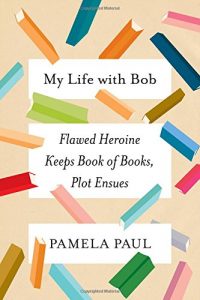 My Life with Bob, by Pamela Paul
My Life with Bob, by Pamela Paul
Ms. Paul is the editor of the New York Times Book Review and has keep ‘Bob’ — her Book Of Books — by her side since high school. How could I not instantly like someone who has kept a journal of everything she has read for 28 years? Talk about kindred spirits.
My Life with Bob is a memoir, cum literary critique with short chapters that reflect on a childhood where being “such a reader” proved to be sometimes lonely and to college where she berates herself for not having read Trollope or the Greek plays – “oh, the shame of being under read”.
Each chapter recounts pivotal points in her life, from divorce to the death of her father, where reading gave her strength, encouragement, solace or just plain escapism. She charts her life through her list of books in Bob and sees how she was formed by reading– from finding herself as a teenager through books, to ultimately a career in the book trade.
In my Book of Books, I can see the way these choices line up and read the signs along the way that reveal those decisions. Here, a novel selected with deliberation; the next, a matter of circumstance. This one was assigned, but that one a book I was dying to read. My mother-in-law gave me that book. This other one was found in the common room of a New England bed-and-breakfast. All of those choices.
Ms. Paul is funny and poignant and I found myself chuckling with her insights and admissions. After an easy, uncomplicated birth, she arranges to stay an extra day in the hospital, just so she could finish her book.
Ms. Paul takes us on her journey to becoming a major player in the book review world and how when overjoyed at a promotion from children’s book editor to chief editor of the Book Review, her children were dismayed and thought she’d been demoted.
My Life with Bob is for anyone who is a reader before almost anything else and will inspire you to start keep track of your reading thoughts.
I only wish I kept a book of books since high school. Alas, my written records only go back to 2000, when a dear friend gave me my first book journal. But I have happy memories of my early reading and the books I loved — My Friend Flicka, Anne of Green Gables, Beautiful Joe, Heidi and, of course, Little Women.
But I digress, here we go with some more books to add to your reading list.
+++++++++++++++++++++++++++++++++++++++++++++++
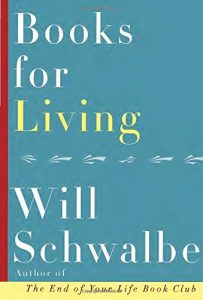 Books for Living, by Will Schwalbe
Books for Living, by Will Schwalbe
Mr. Schwalbe, is the author of the best seller – The End of Your Life Book Club, which documents the books he and his mother read as she lay dying in the hospital. (Resisted reading it, thought it might be too heartbreaking, but now maybe I’ll give it a try.) The author now takes to the page to address how books can fit with the the noise and distractions of our modern world.
In his introduction he writes that reading is “a respite from the relentlessness of technology” and that at the heart of our over-connectiveness is fear —
–fear that we are missing out on something. Wherever we are, there’s someone somewhere doing or seeing or eating or listening to something better.
He goes on to surmise that this brings on a loneliness that separates us from ourselves — and that by reading we can open our minds and grow into our own possibilities of life and living. (Not to mention a un-plugged hike in nature.)
Each chapter covers a topic in which books and reading played a key role in his life. Everything from ‘Embracing Mediocrity’ to ‘Admiring Greatness’ — there’s a beautiful chapter on loosing a childhood friend and how re-reading David Copperfield and his loss of Dora gave him comfort.
Mr. Schwalbe introduced this reader to the Chinese philosopher Lin Yutang and his famous book, The Importance of Living “is about the need to slow down and enjoy life. And, it is about the importance of books and reading.” (Don’t worry, it’s been added to my TBR list.)
It is clear that the author carries his heartbreak with him — the loss of his mother and dear departed friends:
We can’t do much for the people we’ve lost, but we can remember them and we can read for them: the books they loved, and books we think they might have chosen.
Mr. Schwalbe covers a wide range of books from many genres — The Odyssey, The Girl on the Train, The Little Prince, and one of my favorites, Anne Morrow Lindberg’s – A Gift From the Sea. He even finds a place in his reading life for cookbooks, like me, he recognizes they can be far more than just recipe collections.
The appendix for Books for Living lists just over 150 authors, books, plays, poems, stories, and journal articles which Mr. Schwalbe references in Books for Living. You definitely be adding books to your own TBR list. A most enjoyable read for any bibliophile.
While Mr. Schwalbe and I share much when it comes to reading, I was delighted that he is also considered odd — as we both are known to start conversations with — “What are you reading?”
An advanced reading copy was provided by Alfred A. Knopf
+++++++++++++++++++++++++++++++++++++++++++++++
This delightful little book tells of Ms. Hood’s coming of age and how reading shaped her. She breaks the book into ten chapters or lessons — each centering on a book that changed her outlook, built new dreams, or taught her valuable lessons.
The first chapter, or Lesson 1, is entitled How to Dream, and centers on Marjorie Morningstar by Herman Wouk. (Thus the title “Morningstar”.) Ms. Hood read the book as a teenager trapped in a Rhode Island mill town. Marjorie Morningstar allowed her to dream of something bigger. She re-reads it every year:
Maybe that’s why I reread it every year. Maybe, as time beats me up and grief or loneliness or a new kind of bittersweet melancholy take hold, I need to remind myself to keep going, keep reaching, to not forget the girl who believed she could have everything and anything at all.
Like the other two books on books, I felt a kinship Ms. Hood, but this time because of our similar ages. I found myself recognizing her descriptions of growing up in the 60’s & 70’s — with the Viet Nam war on television, girls-only home economics classes, and listening to Simon and Garfunkel. There was the confusion of the world breaking open with the women’s movement, communes, hippies, civil rights — all contrasted with our girl scout activities and mothers having dinner ready for dad’s homecoming each day. We were both girls who hid from this confusion by escaping into the other world(s) of books.
Upon being discovered secretly reading Little Women during class, her elementary school teacher asks her to stay at recess:
“You’re reading Little Women?” she asked, looking at the book in my hands. I nodded. “And you understand it?”, she asked. Again I nodded. Then she asked me tell her what the book was about. At this, I began to talk, about Marmie and the March sisters the plays they put on, about Laurie next door and vain Amy and Jo who wanted to be a writer and how Beth died. I told her it was about family but also about war and dreams and writing and…”And”, I said, “everything. It’s about everything.” Now it was Miss Nolan who nodded. She paused, then pointed to the books that lined the bookshelves in the back of the classroom. “I don’t want you to go out to recess anymore”, she said. “I want to you to stay inside and read all those books”.
(I never had the fortune of such a teacher letting me skip recess or P.E. – sighs of envy.)
Ms. Hood grew up without books at home, and she tells of going to the local library and checking out whichever books were the biggest, (Anna Karenina, Les Miserables) so she could get the most reading per book. There’s a section where a bookstore opens in a mall close by and she revels in the possibility to buy and own a book of her very own.
In Lesson 8: How to Have Sex, Ms. Hood recounts reading The Harrad Experiment which opened her mind about sex and the sexual revolution — where sex didn’t have to become intertwined with love and marriage. (I vaguely remember reading a borrowed copy in high school, and found it both embarrassing and eye opening.)
Ms. Hood could be describing many bookish children growing up, we all felt this way at one time or another:
How can I describe what reading gave to me? An escape from my lonely school days, where girls seemed to speak a language I didn’t understand. A glimpse into the possibilities of words and stories. A curiosity about the world and about people – the young Amelia Earhart seeing her first plane, Helen Keller’s silent world, Nancy Drew solving mysteries, David Copperfield surviving the streets of Victorian London.
But, fear not, the author enjoys pure pleasure reading:
Even now I like to sometimes indulge in the guilty pleasure of reading a book that literary snobs would never consider reading. And I enjoy them, those paperbacks I don’t mind leaving behind on an airplane. They make long flights pass pleasantly. I don’t have to marvel at the use of language or metaphor or puzzle over how the author pulled off such a mind-bogglingly intricate plot. I just read it and forget it, perhaps a habit I learned back in high school when I read any book I could get my hands on.
Morningstar is a lovely book and it reminds us that books can form a childhood – give escape from confusions – spark dreams of bigger things and open us to other worlds.
A digital advanced readers copy was provided by W.W. Norton & Company via NetGalley.
+++++++++++++++++++++++++++++++++++++++++++++++++
So there you go, BookBarmy fans, three more books about books to re-read, books you haven’t read, books you need to read, books you may want to read, books to consider reading…
But, no, no I’m not crazy… really.. 